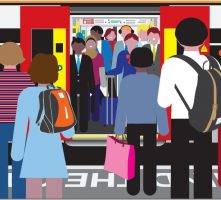September 8, 2016
What do Millennials and Gen Z want from work? The same as everybody else 0
 More evidence that younger people are in fact people after all emerges with the publication of a new report from Randstad and Future Workplace. The study of over 4,000 individuals worldwide claims that despite widespread belief, 41 percent of Generation Z employees believe that collaborative, corporate offices combined with a degree of autonomy and flexibility is their preferred way to work. They prefer bosses with strong communication skills, value face to face meetings, are irritated by distractions and believe they will probably have a career focussed oln one specific sector. As a follow-up to a previous study conducted in 2014, the Gen Z & Millennials Collide@Work report focuses on the impact of Gen Z entering the workplace for the first time and how Millennials are engaging with them. Both studies claim that Gen Z and Millennials continue to prefer communicating with co-workers and managers in-person in lieu of email and phone.
More evidence that younger people are in fact people after all emerges with the publication of a new report from Randstad and Future Workplace. The study of over 4,000 individuals worldwide claims that despite widespread belief, 41 percent of Generation Z employees believe that collaborative, corporate offices combined with a degree of autonomy and flexibility is their preferred way to work. They prefer bosses with strong communication skills, value face to face meetings, are irritated by distractions and believe they will probably have a career focussed oln one specific sector. As a follow-up to a previous study conducted in 2014, the Gen Z & Millennials Collide@Work report focuses on the impact of Gen Z entering the workplace for the first time and how Millennials are engaging with them. Both studies claim that Gen Z and Millennials continue to prefer communicating with co-workers and managers in-person in lieu of email and phone.











 While the number of independent workers in the US gig economy is expected to grow to 54 million people by 2020 and some 40 percent of workers have already experienced it according to
While the number of independent workers in the US gig economy is expected to grow to 54 million people by 2020 and some 40 percent of workers have already experienced it according to 




















August 31, 2016
Addressing the five negative influences on organisational culture 0
by Matias Rodsevich • Comment, Flexible working, Knowledge, Workplace
(more…)